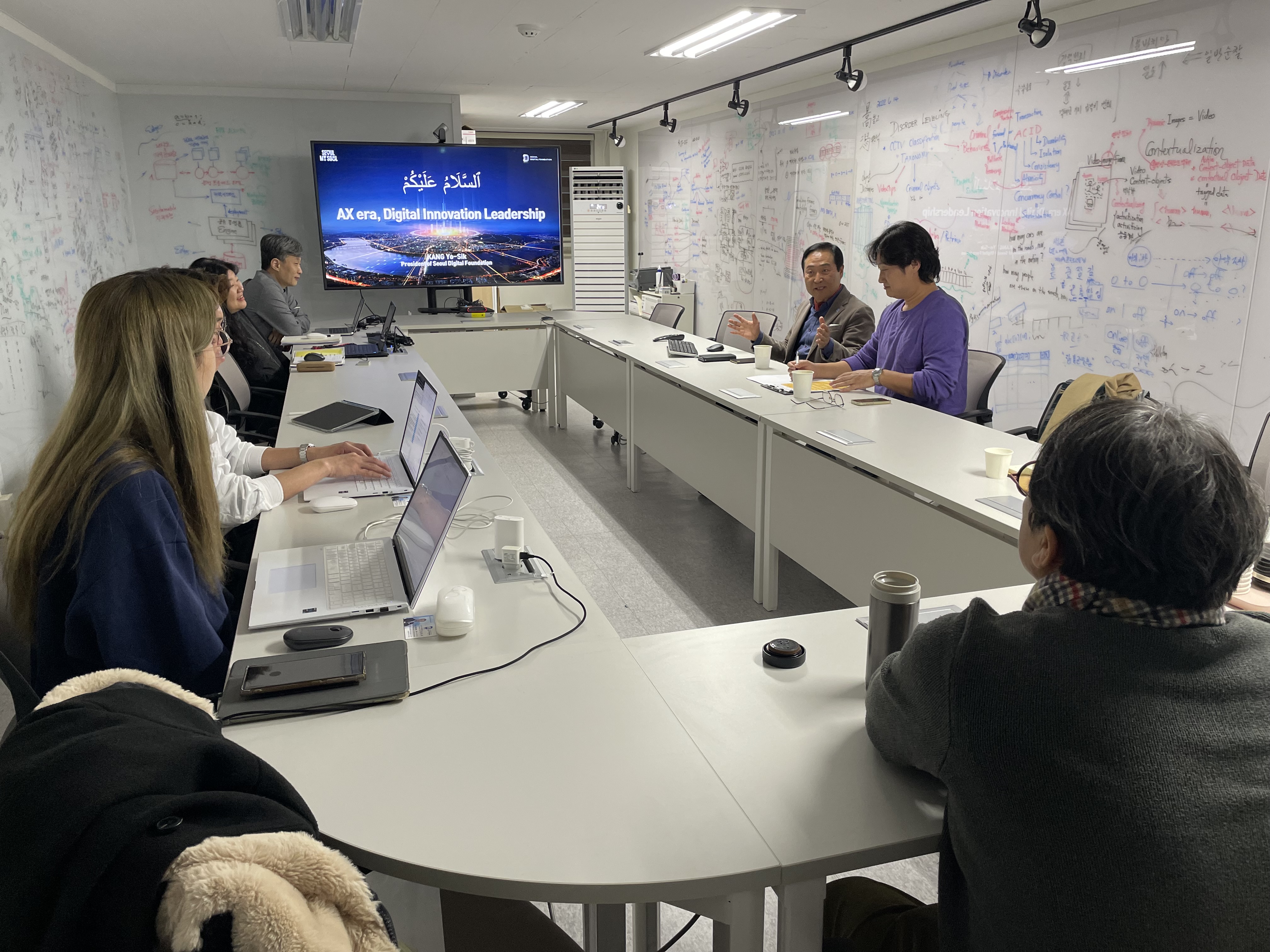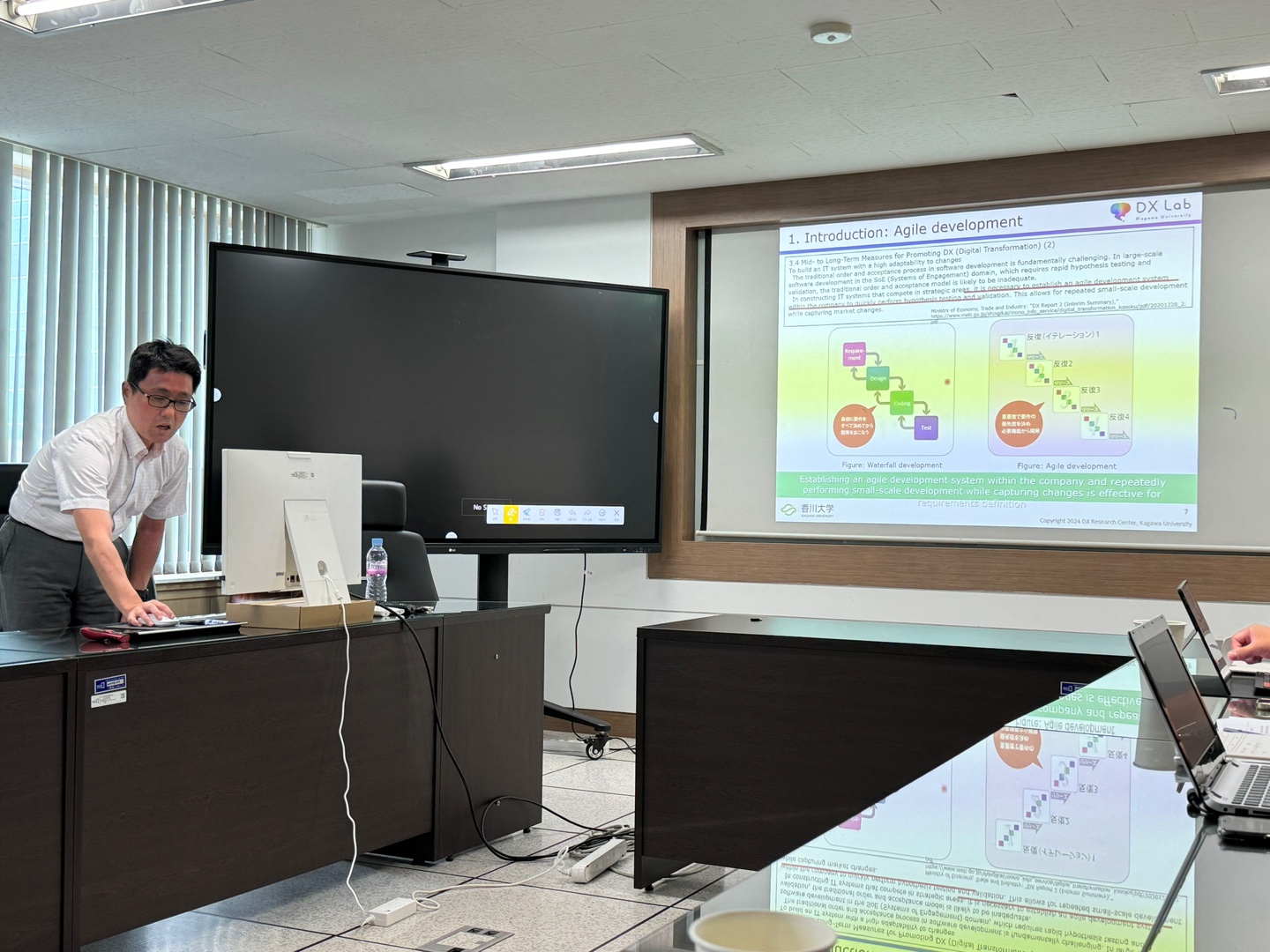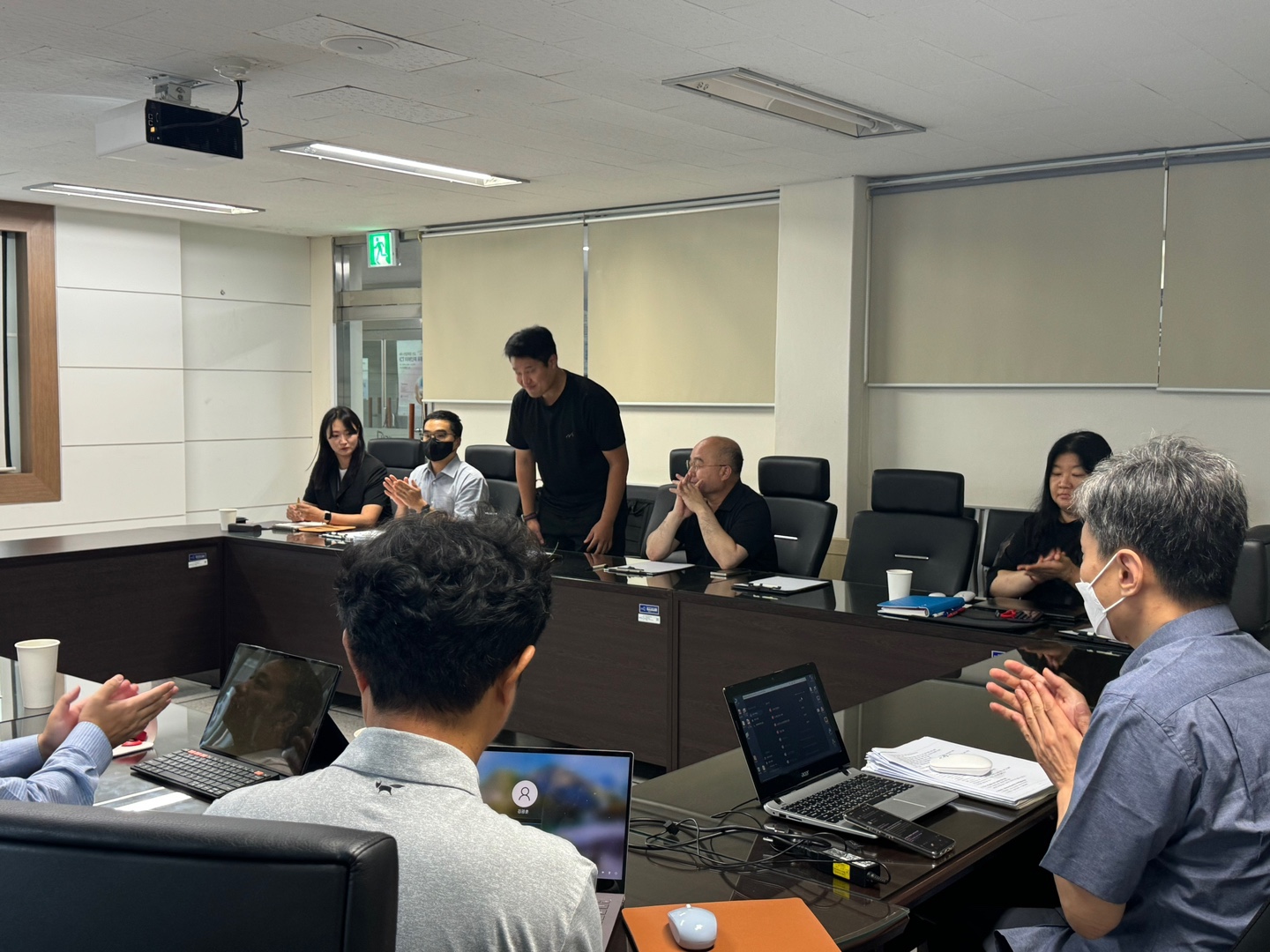경기대학교 콘텐츠융합소프트웨어연구소(이하 “연구소”)는 「개인정보 보호법」 제30조에 따라 이용자의 소중한 개인정보를 보호하고 이와 관련한 고충을 신속하고 원활하게 처리할 수 있도록 다음과 같은 처리 방침을 수립·공개합니다.
연구소는 개인정보 처리 방침을 개정하는 경우 웹사이트 공지사항에 고지하거나 개별 통지합니다.
○ 본 방침은 2023년 02월 13일부터 시행됩니다.
<개인정보 및 민감정보의 수집 및 이용>
제1조 (개인정보·민감정보의 처리 목적)
① 정의
1. 「개인정보 보호법」에서 정의하는 “개인정보”는 살아 있는 개인에 관한 정보로 개인을 알아볼 수 있는 정보, 해당 정보만으로는 특정 개인을 알아볼 수 없더라도 다른 정보와 쉽게 결합하여 알아볼 수 있는 정보 등을 말합니다.
2. 「개인정보 보호법」에서 정의하는 “민감정보”는 개인의 신체적, 생리적, 행동적 특징에 관한 정보로서 특정 개인을 알아볼 목적으로 일정한 기술적 수단을 통해 생성한 정보를 말합니다.
② 연구소가 처리하고 있는 개인정보·민감정보는 다음의 목적 이외의 용도로는 사용되지 않으며, 이용 목적이 변경되었을 때는 「개인정보 보호법」 제18조에 따라 별도의 동의를 받는 등 필요한 조치를 이행할 예정입니다.
③ 연구소는 다음의 목적을 위하여 개인정보를 처리합니다.
1. 회의실 예약 기능 제공
연구소 홈페이지 이용자(이하 “이용자”)의 회원가입 의사 확인, 이용자의 회의실 예약 및 예약 신청한 회의실 이용에 따른 허가/거절/이용의사확인과 원활한 회의실 운영을 위한 회의실 일정 관리 등을 목적으로 개인정보를 처리합니다.
2. 이용자 응대 처리
이용자의 신원확인, 불만사항 확인, 원활한 회의실 운영을 위한 연락·통지, 처리결과 통보 등을 목적으로 개인정보를 처리합니다.
3. 문의 접수
연구소 홈페이지 Contact 페이지를 통한 이용자의 문의 접수와 이에 대한 연구소의 답변을 연락·통지하기 위한 목적으로 개인정보를 처리합니다.
④ 연구소는 홈페이지를 통한 민감정보를 수집하지 않습니다.
제2조 (개인정보·민감정보의 처리 및 보유기간)
① 연구소는 법령에 따른 개인정보·민감정보 보유·이용 기간 또는 정보 주체로부터 개인정보·민감정보를 수집 시에 동의 받은 개인정보·민감정보 보유·이용 기간 내에서 개인정보·민감정보를 처리·보유합니다.
② 각각의 개인정보 처리 및 보유기간은 다음과 같습니다.
1. 홈페이지 회원가입 후 탈퇴 시까지. 다만, 다음의 사유에 해당하는 경우에는 해당 사유 종료 시까지 보유합니다.
1) 홈페이지 Contact 페이지를 통한 문의 작성과 관련된 처리 완료 시점까지
③ 각각의 민감정보 처리 및 보유기간은 다음과 같습니다.
1. 연구소는 민감정보 수집 및 이용 목적이 달성되거나 보유기간이 만료되면 해당 정보를 즉시 파기합니다.
2. 연구소는 보유기간 중 민감정보가 분실, 도난, 유출, 위조, 변조, 훼손되지 않도록 안전성 확보에 필요한 조치를 취할 의무를 갖습니다.
제3조 (처리하는 개인정보·민감정보 항목)
① 연구소는 서비스 이용 시 필요한 개인 정보만을 수집하며, 수집 시에는 이용자에게 상세히 안내하고 동의를 받아 처리하고 있습니다.
② 이용자는 개인정보·민감정보 수집 동의를 거부할 수 있으며, 동의를 거부했을 때는 이를 사용하는 서비스 및 관련 기능을 이용할 수 없습니다.
③ 정의
1. “필수정보”는 기본적인 서비스를 제공하기 위해 수집하는 개인정보로서, 서비스 이용을 위해 개인정보 수집에 동의해야 하는 정보입니다.
2. “선택정보”는 기본적인 서비스 이외에 부가적인 서비스를 제공하기 위해 수집하는 개인정보입니다.
④ 연구소는 이용자에게 서비스를 제공하기 위해 아래와 같은 개인정보를 수집합니다.
1. 홈페이지 이용 및 관리
- 필수 개인정보항목 : 이름, 연락처, 이메일, 소속, 서비스 이용 기록, 접속 로그, 세션, 접속 IP 정보
2. 서비스 제공
- 필수 개인정보항목 : 이름, 연락처, 이메일, 소속, 서비스 이용 기록, 세션
3. 문의대응
- 필수 개인정보항목 : 이름, 이메일, 연락처
<정보주체의 권리, 개인정보·민감정보의 파기, 개인정보보호 책임자>
제1조 (정보주체 및 법정대리인의 권리·의무 및 행사 방법)
① 정보주체는 연구소에게 언제든지 개인정보 열람·정정·삭제·처리정지 요구 등의 권리를 행사할 수 있습니다.
② 제1항에 따른 권리 행사는 「개인정보 보호법」 제41조 제1항에 따라 서면, 전자우편 등을 통하여 하실 수 있으며, 연구소는 이에 대해 즉시 조치합니다.
③ 제1항에 따른 권리 행사는 정보주체의 법정대리인이나 위임을 받은 자 등 대리인을 통하여 하실 수 있습니다. 이 경우 「개인정보 처리 방법에 관한 고시(제2020-7호)」 별지 제11호 서식에 따른 위임장을 제출하셔야 합니다.
④ 개인정보 열람 및 처리정지 요구는 「개인정보 보호법」 제35조 제4항, 제37조 제2항에 따라 정보주체의 권리가 제한될 수 있습니다.
⑤ 개인정보의 정정 및 삭제 요구는 다른 법령에서 그 개인정보가 수집 대상으로 명시되어 있을 때에는 그 삭제를 요구할 수 없습니다.
⑥ 연구소는 정보주체 권리에 따른 열람의 요구, 정정·삭제의 요구, 처리정지의 요구 시 열람 등 요구를 한 자가 본인이거나 정당한 대리인인지를 확인합니다.
제2조 (개인정보·민감정보의 파기)
① 연구소는 개인정보·민감정보 보유 기간의 경과, 처리 목적 달성 등 개인정보·민감정보가 불필요하게 되었을 때에는 즉시 해당 개인정보를 파기합니다.
② 개인정보·민감정보 파기의 절차 및 방법은 다음과 같습니다.
1. 파기절차
이용자가 입력한 정보는 목적 달성 후 별도의 데이터베이스에 옮겨져(종이의 경우 별도의 서류) 내부 방침 및 기타 관련 법령에 따라 일정 기간 저장된 후 혹은 즉시 파기됩니다. 이때, 데이터베이스로 옮겨진 개인정보는 법률에 의한 경우가 아니고서는 다른 목적으로 이용되지 않습니다.
2. 파기 기한
정보주체의 개인정보·민감정보는 개인정보의 보유기간이 경과된 후에 보유기간의 종료일로부터 5일 이내에, 개인정보·민감정보의 처리 목적 달성, 해당 서비스의 폐지, 사업의 종료 등 그 개인정보·민감정보가 불필요하게 되었을 때에는 개인정보·민감정보의 처리가 불필요한 것으로 인정되는 날로부터 5일 이내에 그 개인정보를 파기합니다.
3. 파기방법
연구소는 전자적 파일 형태로 기록·저장된 개인정보·민감정보는 기록을 재생할 수 없도록 파기하며, 종이 문서에 기록·저장된 개인정보는 분쇄기로 분쇄하거나 소각하여 파기합니다.
제3조 (개인정보 자동 수집 장치의 설치·운영 및 거부에 관한 사항)
① 연구소는 개별적인 맞춤 서비스를 제공하기 위해 이용정보를 저장하고 수시로 불러오는 ‘세션(Session)’과 ‘쿠키(Cookie)’를 사용합니다.
② 세션은 웹 통신 간 유지하려는 정보를 저장하기 위해 이용자의 웹 서버로 보내는 소량의 정보이며, 쿠키는 유지 정보가 이용자 PC 내의 하드 디스크에 저장된 정보입니다.
1. 세션·쿠키의 사용 목적
이용자가 방문한 각 서비스와 웹 사이트들에 대한 방문 및 이용 형태, 보안접속 여부 등을 파악하여 이용자에게 최적화된 정보 제공을 위해 사용됩니다.
2. 세션·쿠키의 설치·운영 및 거부
웹브라우저 상단의 도구>인터넷 옵션>개인정보 메뉴의 옵션 설정을 이용해 세션 저장을 거부할 수 있습니다. 쿠키 설정을 거부하는 방법으로는 이용자가 사용하시는 웹 브라우저의 옵션을 선택함으로써 모든 쿠키를 허용하거나 쿠키를 저장할 때마다 확인을 거치거나, 모든 쿠키의 저장을 거부할 수 있습니다. 단, 세션·키 저장을 거부할 경우 맞춤형 서비스 이용에 어려움이 발생할 수 있습니다.
제4조 (개인정보 보호 책임자)
① 연구소는 개인정보 처리에 관한 업무를 총괄해서 책임지고, 개인정보 처리와 관련한 정보주체의 불만 처리 및 피해 구제 등을 위하여 아래와 같이 개인정보 보호 책임자를 지정하고 있습니다.
▶ 개인정보 보호 책임자
성명 : 장정현
직책 : 연구교수
연락처 : 031-249-8962 / tiger564@nate.com
▶ 개인정보 보호 담당 부서
성명 : 장정현
직책 : 경기대학교 콘텐츠융합소프트웨어연구소
연락처 : 031-249-8962 / tiger564@nate.com
② 정보주체께서는 연구소의 서비스(또는 사업)을 이용하면서 발생한 모든 개인정보 보호 관련 문의, 불만 처리, 피해 구제 등에 관한 사항을 개인정보 보호 책임자 및 담당 부서로 문의하실 수 있습니다. 연구소는 정보주체의 문의에 대해 즉시 답변 및 처리해 드릴 것입니다.
제5조 (개인정보의 안정성 확보 조치)
연구소는 개인정보 보호법 제29조에 따라 다음과 같이 안정성 확보에 필요한 기술적, 관리적 및 물리적 조치를 취하고 있습니다.
1. 정기적인 자체 감사 실시
개인정보 취급 관련 안정성 확보를 위해 정기적(분기별 1회)으로 자체 감사를 실시하고 있습니다.
2. 개인정보의 암호화
이용자의 개인정보는 암호화되어 저장 및 관리하고 있어 이용자 본인만이 알 수 있습니다. 또한 중요한 데이터는 파일 및 전송 데이터를 암호화하거나 파일 잠금 기능을 사용하는 등의 별도로 보안 기능을 사용하고 있습니다.
3. 접속기록의 보관 및 위변조 방지
개인정보 처리 시스템에 접속한 기록을 최소 6개월 이상 보관, 관리하고 있으며, 접속 기록이 위변조 및 도난, 분실되지 않도록 보안 기능을 사용하고 있습니다.
4. 개인 정보에 대한 접근 제한
개인 정보를 처리하는 데이터베이스 시스템에 대한 접근 권한의 부여, 변경, 말소를 통하여 개인정보에 대한 접근 통제를 위한 필요 조치를 취하고 있으며, 침입차단 시스템을 이용하여 외부로부터의 무단 접근을 통제하고 있습니다.
5. 비인가자에 대한 출입 통제
개인정보를 보관하고 있는 물리적 보관 장소를 별도로 두고 이에 대해 출입통제 절차를 수립, 운영하고 있습니다.
제6조 (개인정보 처리 방침 변경)
이 개인정보 처리 방침은 2023. 2. 13부터 적용됩니다.
이 개인정보 처리 방침은 시행 일로부터 적용되며, 법령 및 방침에 따른 변경 내용의 추가, 삭제 및 정정이 있을 때 변경사항의 시행 7일 전부터 공지사항을 통하여 고지할 것입니다.
제7조 (권익 침해 구제방법)
정보주체는 개인정보 침해로 인한 구제를 받기 위하여 개인정보분쟁 조정위원회, 한국 인터넷진흥원 개인정보 침해신고센터 등에 분쟁 해결이나 상담 등을 신청할 수 있습니다. 이 밖에 기타 개인정보 침해의 신고, 상담에 대해서는 아래의 기관에 문의하시기 바랍니다.
1. 개인정보분쟁 조정위원회 : 1833-6972 (www.kopico.go.kr)
2. 개인정보 침해신고센터 : 118 (privacy.kisa.or.kr)
3. 대검찰청 : 1301 (www.spo.go.kr)
4. 경찰청 : 182 (cyberbureau.police.go.kr)
「개인정보 보호법」 제35조(개인정보의 열람), 제36조(개인정보의 정정·삭제), 제37조(개인정보의 처리정지 등)의 규정에 의한 요구에 대하여 공공기관의 장이 행한 처분 또는 부작위로 인하여 권리 또는 이익의 침해를 받은 자는 행정심판 법이 정하는 바에 따라 행정심판을 청구할 수 있습니다.



































































































